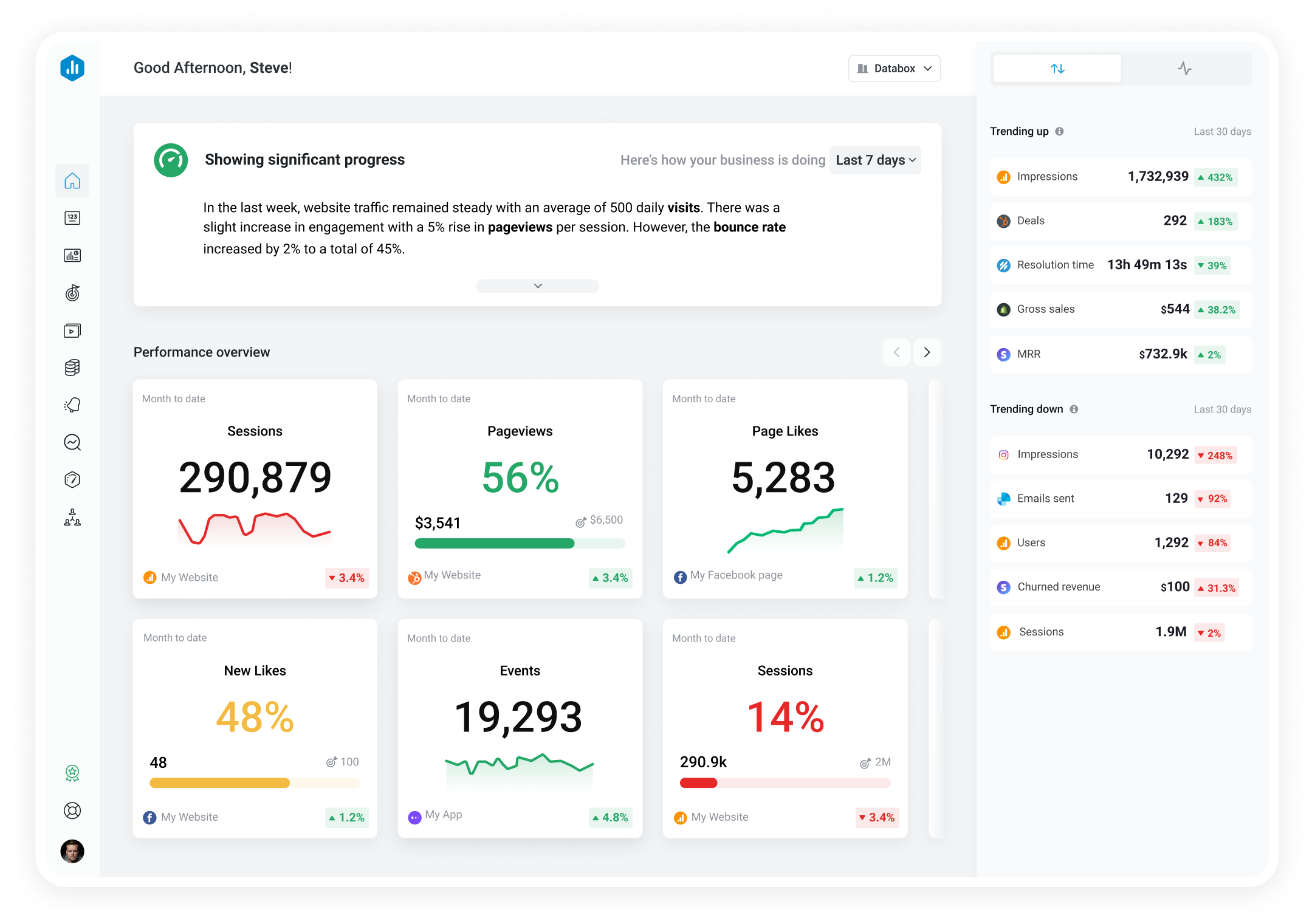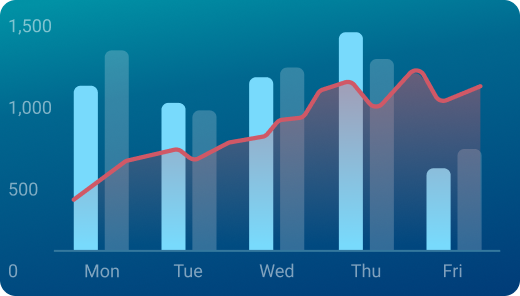Track all of your key business metrics from one screen
GET STARTED
 QuickBooks
Income (Accrual) by Category
QuickBooks
Income (Accrual) by Category The Income (Accrual) by Category metric shows the total amount of revenue earned in a given period, categorized by various income sources such as sales, services, or fees. This metric uses accrual accounting, which records revenue when it's earned, regardless of when payment is actually received.
With Databox you can track all your metrics from various data sources in one place.

Used to show comparisons between values.
Databox is a business analytics software that allows you to track and visualize your most important metrics from any data source in one centralized platform.
To track Income (Accrual) by Category using Databox, follow these steps:
 Goals
Goals Scorecards
Scorecards Metric Digest
Metric Digest Metric Builder
Metric Builder Data Calculations
Data Calculations Performance Screen
Performance Screen